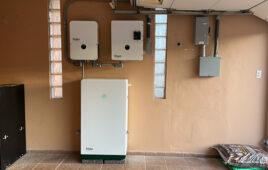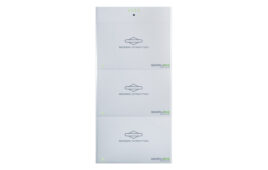
As the photovoltaic industry develops, fused quartz becomes more vital in creating thin films and silicon chips as well as in manufacturing and laboratory ware.
The success of renewable-energy sources depends on improved efficiencies. Fused quartz is a material of primary importance because it improves the efficiency of solar powered devices. It’s also helping researchers drive down the cost of solar devices. Here’s how.
Quartz glass is used in many facets of photovoltaic (PV) cell manufacturing, in light sources, reaction chambers, and tools used in the production of solar cells, thin films, and silicon wafers.
The material’s stability, chemical purity, transmissivity to light, and heat resistance has made quartz vital to the production of semiconductors. The material is almost inert, durable, and withstands the high temperatures associated with semiconductor fabrication and testing.
“Most photovoltaic materials and devices are some type of semiconductor-based photodiode,” says James Horvath, President of Technical Glass Products (TGP), Painesville, Ohio, a distributor and fabricator of fused quartz. “For example, photovoltaic solar cells that use thin-film technology (also called a thin-film photovoltaic cells) often use a crystalline compound based on cadmium telluride, which forms a semiconductor layer that absorbs sunlight and converts it to electricity. The cadmium telluride material, which is deposited as a layer on the film, is processed in fused quartz,” says Horvath.
Photovoltaic solar collectors that use silicon wafer diodes (photodiodes) are also dependent on various quartz products in a manner similar to the semiconductor wafers commonly used in semiconductors.
“Like traditional silicon chips, photodiode wafers are grown and processed in quartz crucibles or large-diameter quartz tubes, then they sliced into wafers and placed onto a panel. Wafers are formed in circles, squares, and other shapes depending on how close the solar-collector designer wants the wafers to fit for the purpose of density or efficiency,” he says.
Horvath adds that all semiconductor producers use a variety of quartz and fused-quarts products, including manufacturing and lab ware products used in development and testing.
Physical properties such as hardness, chemical purity, resistance to high temperatures and corrosion, and electrical insulation make structures composed of fused quartz ideal for semiconductor production.
“Fused quartz is one of the purest materials available, having a nominal purity of up to 99.996%,” Horvath says. “The purity of quartz is beneficial to semiconductor fabricators because even trace amounts of impurities will be transported to silicon wafers and wreak havoc on performance, often making them unacceptable. For example, the presence of any number of impurities can alter the performance of dopants (e.g. phosphorous or arsenic), creating an occasion for lag, thereby interfering with semiconductor performance. Even trace amounts of alkali can reduce wafer yields.”
Horvath adds that the exceptional purity of quartz is unsurpassed in the glass industry, and are much superior to borosilicate products. He adds that the optical purity of quartz may be equally important to many users in laboratory environments because a relatively broad range of light wavelengths pass unimpeded through clear quartz ware, a vital characteristic to many laboratory applications.
“In many instances, in addition to product selection, solar-industry customers should also consider what technical services are needed,” suggests Horvath. “Highly experienced quartz glass blowers should offer a full range of ancillary services, including assistance with product design, applications and specifications, fabrication services, machining and assembly, and repair.”





Tell Us What You Think!